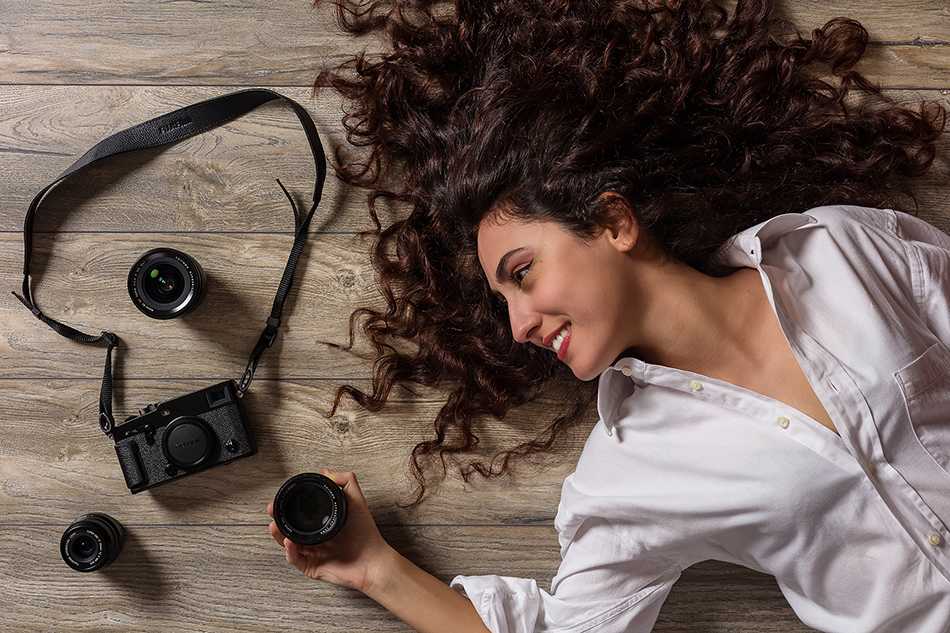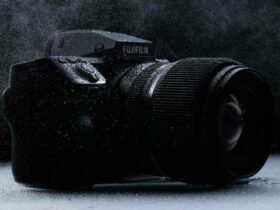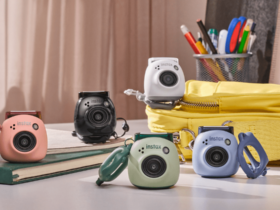A few days after its release, we had the opportunity to try the new Fujifilm X-Pro3: here is our review
We previewed it for you last month, and now we have finally picked it up and are ready to tell you about the new one Fujifilm X-Pro3 in a new review. We experienced the new entry from Fujifilm by researching the flavor of the historic Rangefinders, of which it proves to be a digital heir especially in style. For this, we armed ourselves with a set of fixed lenses, (Fujifilm XF 16mm F1.4 R WR, Fujifilm XF 23 F2 R and Fujifilm XF 56mm F1.2 R APD) and we hit the road, ready to breathe all the charm of the new X-Pro3.
And you, are you ready to find out with us?
Technical specifications | Fujifilm X-Pro3 review
- Sensor: X-TransTM * 2 26.1MP back-illuminated 4 ”CMOS
- Image processor: X-Processor 4
- EVF viewfinder: 0.5 “color OLED with approx.3.69 million dots (4: 3)
- OVF viewfinder: Reverse Galilean optical viewfinder with electronic bright frame
- ISO sensitivity: Standard (ISO160-12800), Extended (ISO 80/100/125/25600/51200)
- Exposure compensation: from -5.0 EV to + 5.0EV in increments of 1 / 3EV
- Camera body: magnesium alloy and titanium coating, tropicalized
- Screen: 3.0 ”color LCD touchscreen, 3: 2 format
- 4K video: (3840 × 2160)]29.97p / 25p / 24p / 23.98p 200Mbps / 100Mbps up to approx.15min
- USB Type-C (USB 3.1 Gen1), enabled for camera charging
- Dimensions: 140.5 x 82.8 x 46.1 mm
- Weight: 497 g
- Price: Black (circa 1950€), Silver (circa 2199€)
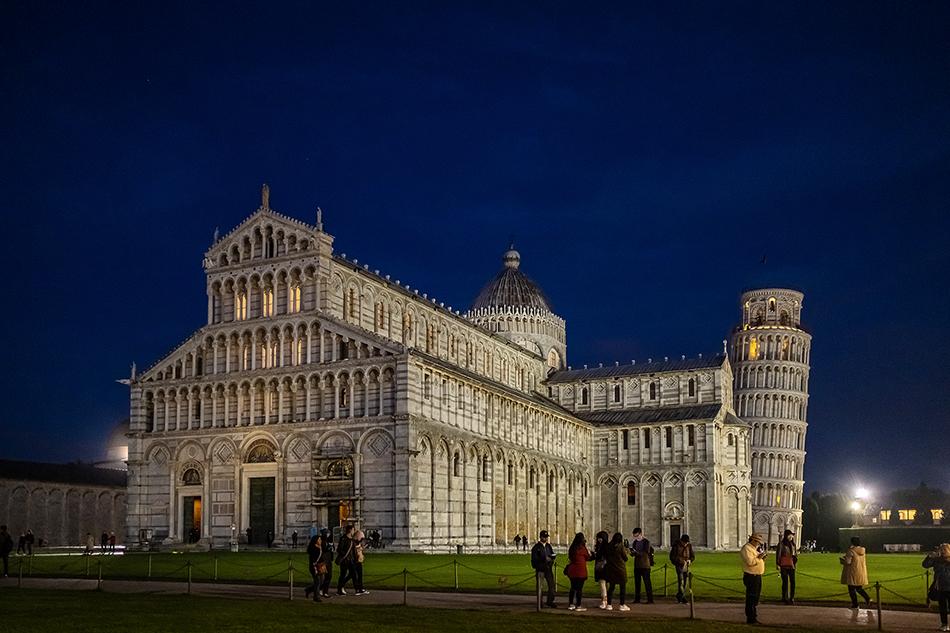
Photo taken with Fujifilm X-Pro3 and Fujifilm XF 23 F2 R (ISO 1600, 1 / 60sec, f / 2)
Usage impressions | Fujifilm X-Pro3 review
The body: the rangefinder style
The new Fujifilm X-Pro3 strikes at first glance. Elegant and resistant, it comes with a magnesium alloy body and scratch-resistant titanium coating, wet and powder tropicalized. The sensation is that of having a solid and stable body in your hands, perfectly balanced. Its weight, less than half a kilo body only with batteries and cards, guarantees good portability and a discreet ease of use.
Fujifilm’s will for the X-Pro series is no mystery: to revive the allure of rangefinder camera style. It does so by going against the tide of a market that tries to adapt to the needs of new digital photography users, who prefer one-handed screen shot, like from a smartphone. With a precise choice, Fujifilm requires the user to experience the moment directly from the viewfinder, in the heart of the scene. It makes the screen impractical for direct viewing, proposing it closed and digitally reproducing the pocket for the film tag, in a vintage touch that winks at old fans. It brings back all the main commands for shooting outdoors, with two dials dedicated respectively to adjusting ISO speed and sensitivity and to manual exposure correction in 1/3 EV steps.
And it re-proposes the optical side viewfinder as it was then on the Rangefinders, which can also be used as an electronic viewfinder to keep the digital soul alive. Switching between the two modes is possible through a front lever that recalls the old mechanical self-timer activation lever in shape and position.
Ergonomics and practicality
The compactness and solidity of the Fujifilm X-Pro3 make it an excellent tool to wear around the neck in the most diverse situations. Designed to make it easy to handle with one hand, it proves to be stable even with large-volume optics. We point out that, with the use of the optical viewfinder (OVF) you are forced to change the habits of grip and support of the optics, to avoid covering part of the angle of view and not to inadvertently change the aperture setting from the lens ring R series
The digital soul
The vintage body has been infused with a digital soul that makes the X-Pro3 a camera suitable for advanced amateurs and professionals fond of tradition. This is thanks to an APS-C sensor X-TransTM * 2 26.1MP back-illuminated 4 ”CMOS, e to an “X-Processor 4” image processing processor. In addition, the high resolution tilting touch LCD screen, with 1.62 million dots, is useful in all those occasions when the viewfinder is not easily reachable; for example, for shooting with the camera down or for those who want to shoot unnoticed while pretending to change the setting dials.
The electronic viewfinder (EVF) uses a 3.69 million dot organic EL panel. Thanks also to an equivalent refresh rate of around 200fps, the EVF proves to be a comfortable and pleasant choice. Very useful is the ability to preview exposure and white balance directly in the viewfinder, as well as the simulation of the zoom of the focus area. To take into account, however, the energy required to perform these functions, which drastically reduces the already short battery life (about 300-400 shots with optical viewfinder, 200-300 with EVF).
The optical viewfinder can be combined with a preview of the electronic viewfinder, which makes the detail of focus and exposure more visible. Just as it is possible to display a frame with the simulation frames of the different angles of view of the lenses (pressing the central button on the change lever of the type of viewfinder).
Important for professional use is the provision of a double SD card slot, which allows the multi-recording of services in backup.
Room development | Fujifilm X-Pro3 review
One of the strengths of Fujifilm’s Mirrorless series is the ability to develop finished JPEGs directly in the camera, simulating traditional negative films. You can choose between the simulations of: Provia, Velvia, Astia, Pro Negative, Eterna and Acros, already present on the X-Pro2 and suitable for various shooting conditions; Monochromatic Color, which allows you to adjust black and white by choosing the key color from a matrix of warm / cool tones and magenta / green tones. And in addition, the Fujifilm X-Pro3 features the new “Classic Neg” Simulation which reproduces color negative film, with rich color contrast and excellent image definition.
Dynamic Range
Also on the X-Pro3, as in the previous models, Fujifilm offers the Dynamic Range function, a process for optimizing the development of the JPEG in the camera that allows you to decrease the contrast within the photo.. A useful tool for reducing exposure in very bright areas of the histogram and not burning the whites. It is possible to set the dynamic range in the car, thus leaving the machine itself to think about the corrections (a choice which we do not recommend because it is not always reliable); or, you can change the Dynamic Range parameter from time to time by choosing between DR100 (no correction), DR200 (one stop of EV underexposure) or DR400 (2 stops of EV underexposure) according to the lighting conditions.
We conducted some JPEG development tests in the camera, also taking advantage of the DE setting. The X-Pro3 has proved to be a decent alternative for those who want to have a finished product immediately and, why not, quickly shareable through the camera’s wifi.
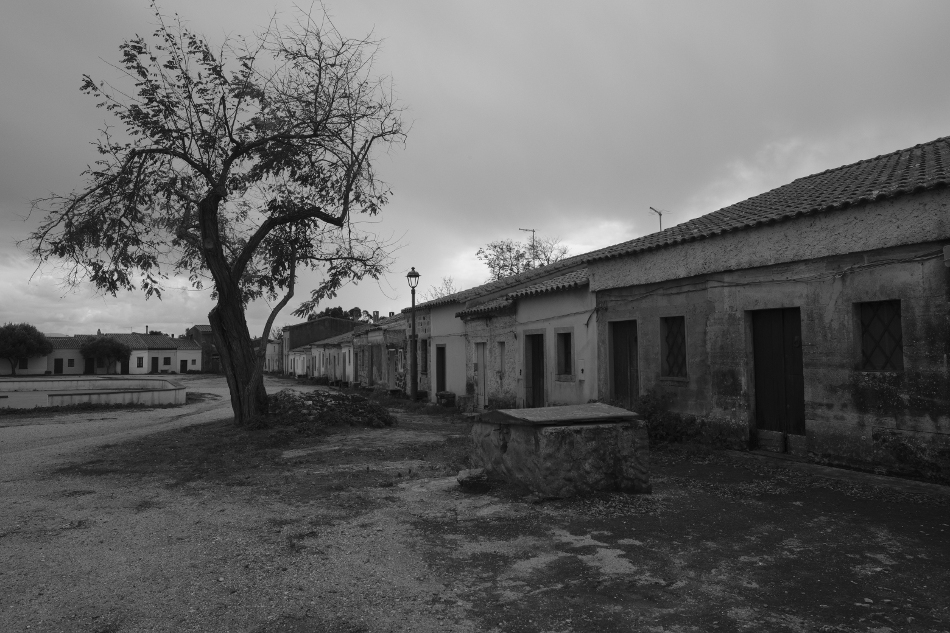
Photo taken with Fujifilm X-Pro3 and Fujifilm XF 16mm F1.4 R WR (ISO 400, 1 / 250sec, f / 10.9, DR200)
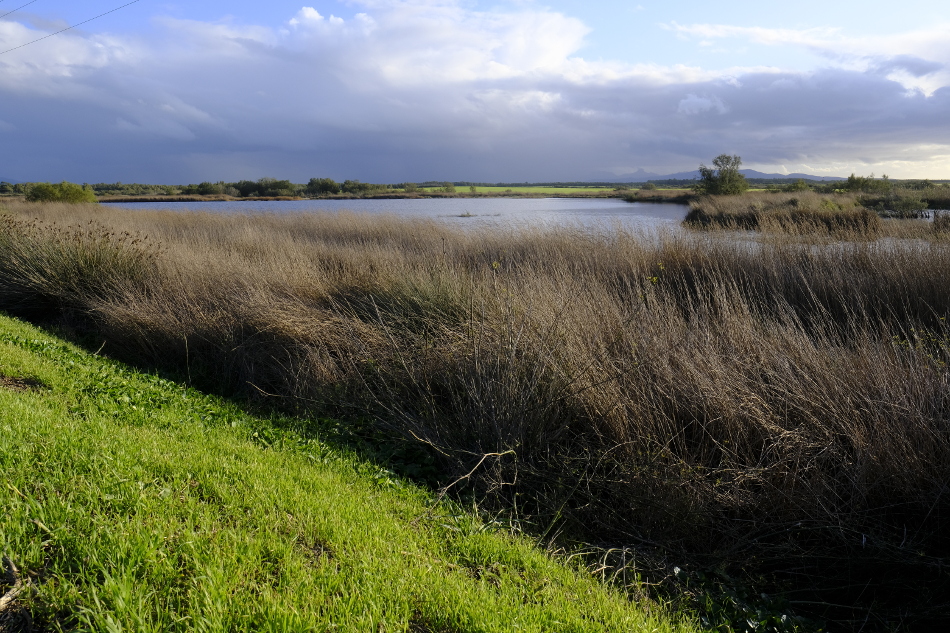
(ISO 320, 1 / 320sec, f / 10.9) Photo taken with the Fujifilm X-Pro3 and Fujifilm XF 16mm F1.4 R WR
Field tests | Fujifilm X-Pro3 review
The new Fujifilm X-Pro3 kept us company for about four weeks, during which we experimented and wandered to rediscover the charm of vintage photography. We preferred shooting situations that allowed us to live the experience of Street Photography, but we certainly did not miss some opportunities to subject the camera to conditions that were not entirely favorable.
Street Photography
The first choice was, of course, that of Street Photography. We excluded the possibility of using the optical viewfinder, which limited the view too much due to the obstruction of the lens, and opted for the electronic viewfinder with exposure preview and white balance, to ensure rapid exposure adjustment.. The worn camera was comfortable with the neck strap and easy and quick to grip, with an instinctive and quick use. The tilting screen was also very useful, for shooting without attracting the attention of the framed subjects.
Results at medium-high ISO
We also decided to shoot in extreme light (sunset and night hours), to use the X-Pro3 at medium-high ISO (1600-6400 ISO). At sunset, the Fujifilm X-Pro3 proved to be a valid ally: excellent performance and bright colors. At ISO 1600 we found a first evidence of digital noise, easily treatable in development with Capture One Pro12.
In the early hours of the dark, we used ISO up to 6400, a sensitivity at which the X-Pro3 already shows the first signs of important digital noise. In development with Capture One Pro 12, we preferred not to reduce noise at all to avoid image clumping and to save details. The results, visible below, still appear pleasant and acceptable and the effect of the residual noise resembles the grain of the film.

Photo taken with Fujifilm X-Pro3, and Fujifilm XF 16mm F1.4 R WR lens (ISO 6400, 1 / 250sec, f / 2.5)
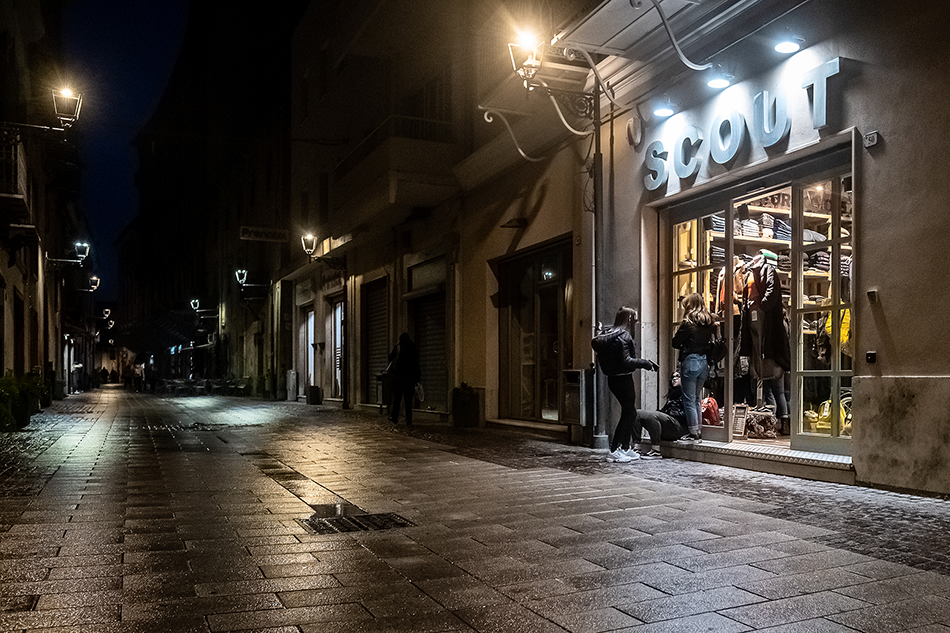
Photo taken with Fujifilm X-Pro3, and Fujifilm XF 16mm F1.4 R WR lens (ISO 6400, 1 / 250sec, f / 2.8)
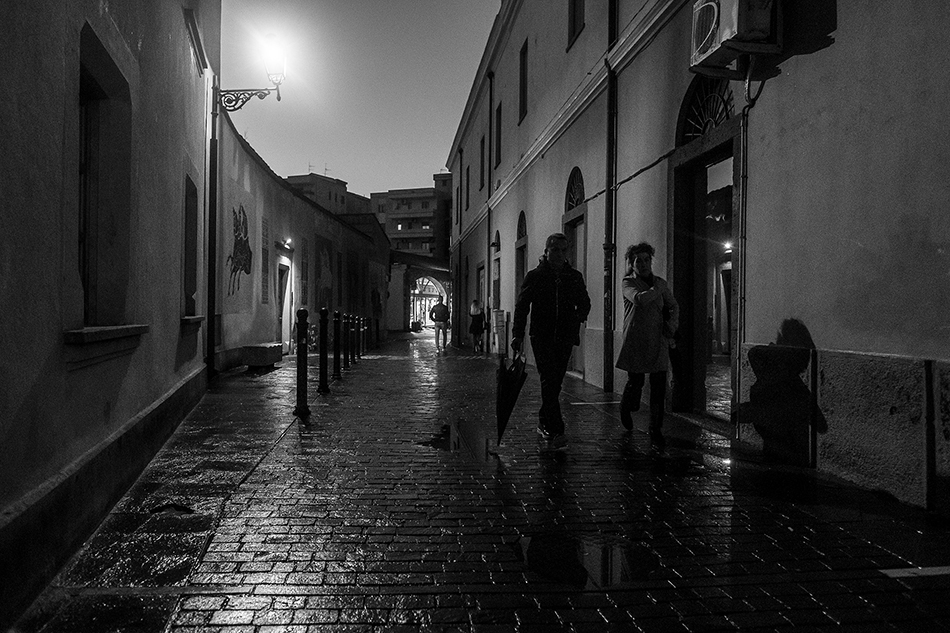
(ISO 3200, 1/250 sec f / 2.5) Photo taken with the Fujifilm X-Pro3, and Fujifilm XF 16mm F1.4 R WR lens
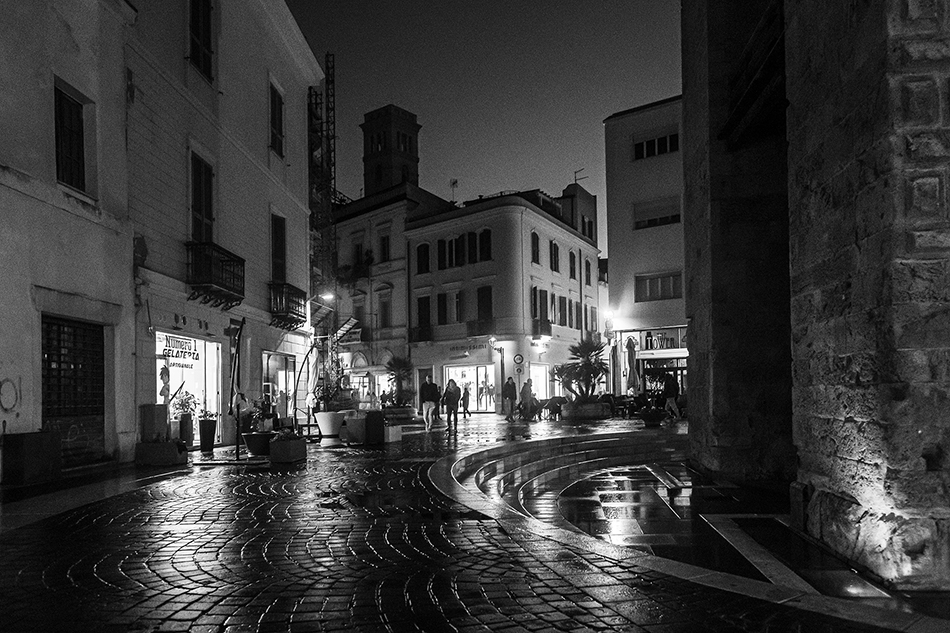
(ISO 6400, 1/250 sec f / 2.2) Photo taken with Fujifilm X-Pro3, and Fujifilm XF 16mm F1.4 R WR lens
Natural landscape
The Fujifim X-Pro3 accompanied us on more than one walk in nature; from the sea to the river to the countryside, in conditions of intense light and partially or very cloudy skies. We also carried out tests in Long Exposure, by the sea with Neutral Density filters, using the B (Bulb) exposure with counting of the seconds; in this, the thread of the shutter button was useful, which allowed us to take advantage of a universal shutter cable. Once fixed on the tripod, from the 90 ° tilted LCD screen we could comfortably observe the exposure preview and balance the settings accordingly.
The camera also offers a T exposure, from which it is possible to set times longer than one second (the maximum that the ring can reach), and a setting for the Timelapse, which can be activated from the menu.
Urban Landscape – Pisa
For this review, we put the Fujifilm X-Pro3 to the test even in an urban setting. In the city, the car was our companion in the search for the perfect corner on the Pisan Lungarno. We shot handheld and in motion, with the Fujifilm XF 16mm F1.4 R WR. Before sunset and then during, the Fujifilm X-Pro3 gave birth to shots with soft and pleasant shades. Again we have …







